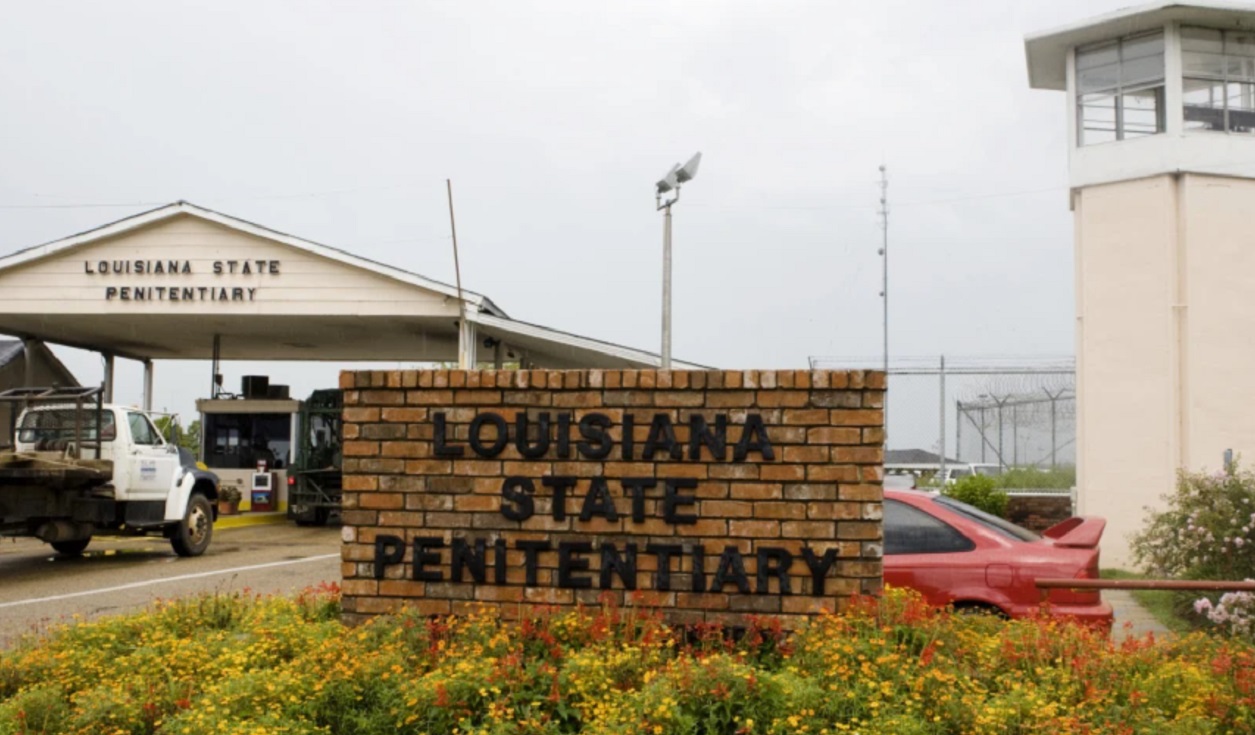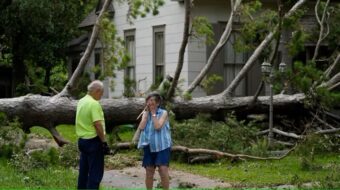
Sweltering doesn’t even describe it.
This week, more than a third of the U.S. population was under excessive heat warnings and heat advisories. Dozens of major cities and states have set new temperature records in recent weeks, including Baton Rouge, Louisiana, which logged its hottest June ever.
Less than an hour from the city is Louisiana State Penitentiary, better known as Angola Prison, where the state set up a temporary youth jail last fall, in a building that once housed adults awaiting execution.
A federal court filing this week from the Louisiana American Civil Liberties Union alleges that the youth at Angola face inhumane conditions, in large part because they are regularly kept in non-airconditioned cells for up to 72 hours. In a statement to the court, medical expert Dr. Susi U. Vassallo called the practice “foolhardy and perilous,” and said, “I would not dare to keep my dog in these conditions for fear of my dog dying.”
This June and July at the prison, the heat index has regularly exceeded 125 degrees, which the National Weather Services classifies as “extreme danger” for heat-related illness and death.
In 2021, Louisiana spent $2.8 million to study what it would cost to cool all of its prisons with air conditioning, but it is still waiting on results. In the meantime, adults at Angola — the state’s largest facility — struggle for relief. “It’s over 100 degrees in there. I lie on the floor. I barely can breathe. God, it feels like it’s suffocating!” an unidentified person told The Advocate.
It’s hardly just a Louisiana problem. Texas is the state most frequently tied to prison heat, as it is both the largest state prison system in the country, and one of the hottest states on average, second only to Florida. More than two-thirds of Texas state prisons do not have air conditioning in their living quarters. In May, state senators killed a bill — which had passed the state House — that would have invested half a billion dollars into air conditioning prisons over the next eight years.
Texas hasn’t officially declared a heat-related death behind bars since 2012, but a November study in the Journal of American Medicine concluded that 271 deaths in Texas prisons between 2001 and 2019 “may be attributable to extreme heat days.” A separate nationwide study released this week found that for every 10 degrees above the average summer temperature, prison deaths increase by 5.2%.
The Texas prison system does have a program for sorting out which people are most sensitive to the heat and transferring them to so-called “cool beds” at prisons with air conditioning, largely because of lawsuits. Those left behind describe the conditions as torture.
Last month, The New York Times interviewed more than a dozen currently and formerly incarcerated people about the “effort at survival” behind bars during extreme heat. Several reported flooding their cells and lying on the wet concrete for relief, while others scream or light fires to draw attention from guards. In a newsletter about the heat in prisons last summer, we covered some more of the desperate and inventive methods that people employ to survive the heat.
In a powerful essay earlier this month for Prism Reports, Kwaneta Harris, who is in prison in Texas, writes that women in her unit regularly engage in self-harm just to be transferred to the air-conditioned psychiatric unit, a tactic that guards try to dissuade with threats of tear gas. She also notes the dramatic increase in the cost of bottled water in the prison store in the depths of the heatwave. “I guess price gouging is legal when the state is the gouger and prisoners are the customers. This all contributes to desperation,” Harris writes.
Corrections officers don’t spend as much time in prisons as incarcerated people, but many still face punishing conditions from the heat. It’s not uncommon for guards to work 12- or 14-hour shifts outfitted in a bulky stab-proof vest, the head of an officer’s union in Texas told KXAN-TV. “It’s comparable to if you go buy the heaviest coat possible, put that coat on and go to Texas Memorial Stadium and run up and down the stairs constantly,” Executive Director Jeff Ormsby told the station.
Corrections officials and lawmakers throughout the South have cited non-airconditioned prisons as a major impediment to hiring officers. As my colleague Maurice Chammah recently told PBS News Hour, “Part of that is that they don’t want to live through the heat, but part of it is also the corrections officers don’t want to live with the increased levels of violence, of suicide, and other problems that are in a prison during these hottest summer months.”
Staff shortages, in turn, can worsen punishingly hot conditions. At the Dauphin County Prison in central Pennsylvania, prisoners have been on lockdown through most of July due to staffing issues, according to county officials. That means people spend 23 hours a day in cells with no ventilation, air conditioning, or windows. Lack of staff can also hamper access to the “heat mitigation” strategies that most prison systems employ, which include access to ice, extra showers, and fans.
Even facilities with air conditioning can face dangerous heat when those systems fail. That was the case on Tuesday at the Perryville women’s prison complex in Arizona, where some evaporative coolers failed. Indoor temperatures quickly climbed as high as 98 degrees, and women there told KPNX that the cells were like “concrete coffins.”
We hope you appreciated this article. At People’s World, we believe news and information should be free and accessible to all, but we need your help. Our journalism is free of corporate influence and paywalls because we are totally reader-supported. Only you, our readers and supporters, make this possible. If you enjoy reading People’s World and the stories we bring you, please support our work by donating or becoming a monthly sustainer today. Thank you!












Comments